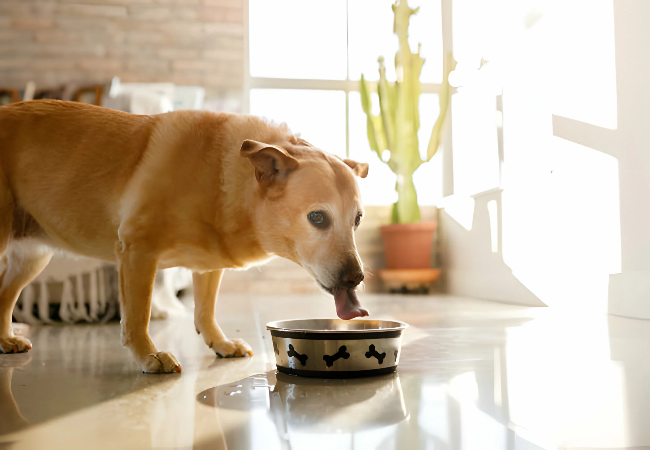A Vet’s Guide to Feeding Dogs with Kidney Disease 2025 🍽️🐾

In this article
A Vet’s Guide to Feeding Dogs with Kidney Disease 2025 🍽️🐾
By Dr. Duncan Houston BVSc
Hello! I’m Dr Duncan Houston BVSc, a veterinarian and founder of Ask A Vet. Nutritional care is a cornerstone of managing canine kidney disease. In this vet‑approved guide, I’ll walk you through choosing the right diet, balancing nutrients, prescription vs homemade options, key supplements, hydration strategies, and mealtime tips—designed to support your dog’s kidney function, appetite, and quality of life well into 2025. 🩺🐾
1. Why Diet Matters in Kidney Disease
Kidneys are responsible for filtering waste and maintaining electrolyte balance. In chronic kidney disease (CKD), reduced function leads to toxin buildup, nausea, mouth ulcers, and decreased appetite. Proper nutrition can slow progression and improve well-being.
2. Nutritional Goals for Dogs with CKD
- Optimize protein: Moderate levels (31–41 g/1000 kcal), high-quality, digestible sources.
- Restrict phosphorus: 0.5–0.8 g/1000 kcal to slow renal decline.
- Limit sodium: 0.4–1.2 g/1000 kcal to protect blood pressure & hydration.
- Increase moisture: Prefer wet foods or moistened kibble to support hydration.
- Boost omega‑3 fats: EPA/DHA at ~0.4–1.2 g/1000 kcal to reduce inflammation.
- Add antioxidants and fermentable fiber: Help eliminate nitrogenous waste via stool.
3. Prescription Kidney Diets: Pros & Cons
Vet-formulated diets (Hill’s k/d, Royal Canin Renal, Purina NF) undergo rigorous testing to meet CKD nutritional goals. Benefits include:
- Right nutrient balance for various CKD stages.
- Hydration support via wet formulas.
- Prescribed by vets based on lab values and clinical signs.
Potential challenges: Palatability issues, cost concerns, and evolving CKD may require diet adjustments.
4. Homemade Kidney-Friendly Diets
Homemade diets can improve appetite, but must be balanced. Studies show many home recipes lack nutritional completeness; collaborate with a veterinary nutritionist or services like BalanceIT.
Essentials include:
- High biological value protein (e.g., egg whites, lean meats)
- Carbs and fats to meet caloric needs
- Supplements: potassium, omega‑3, antioxidants, phosphate binders
- Regular lab tests to fine-tune nutrients
5. Key Supplements & Add‑Ons
- Omega‑3 fatty acids: Support kidney health and reduce inflammation.
- Antioxidants: Protect kidney cells from oxidative stress.
- Fermentable fiber: Helps remove nitrogenous waste via the gut.
- Phosphate binders: Reduce dietary phosphorus absorption.
- Potassium supplements: For dogs prone to low blood potassium.
6. Hydration & Mealtime Strategies
- Serve wet or moistened food: Boosts water intake.
- Encourage drinking: Ideal bowls, fresh water, water fountains.
- Frequent small meals: Lessens nausea and boosts intake.
- Enhance appetence: Warm food, flavor enhancers, mild gravy.
- Monitor weight & labs weekly, adjusting diet as CKD evolves.
7. Integration with Ask A Vet & Home Tools
- Ask A Vet Telehealth: For dietary planning, renal lab review, supplement guidance.
8. Case Study: Rocky’s Renal Recovery
Rocky, a 10‑year-old Shih Tzu with Stage 2 CKD
After diagnosis, we transitioned Rocky to wet Hill’s k/d, added omega‑3 supplements, and a phosphate binder. Portions were split into three meals daily, moistened for palatability, and we used puzzle feeders. Over 6 months, his appetite stabilized, weight held steady, BUN/creatinine slowed in rise, and energy improved. Telehealth check‑ins helped fine-tune the approach.
9. Adjusting as Kidney Disease Progresses
- Early CKD: Moderate protein, phosphorus control.
- Advanced CKD: Further protein/phosphorus reduction, focus on comfort, appetite support, hydration.
- Symptomatic dogs: Consider feeding tubes and appetite stimulants (e.g., mirtazapine, capromorelin).
- At-home fluids: SC fluids for hydration support.
- Frequent vet visits: Every 3–4 months or sooner based on clinical signs.
10. Summary: Kidney-Friendly Feeding Checklist
- ✔ Choose a wet prescription renal diet or balanced homemade alternative
- ✔ Monitor protein (31–41 g/1000 kcal), phosphate (0.5–0.8 g), sodium (0.4–1.2 g)
- ✔ Include omega‑3, antioxidants, fermentable fiber, phosphate binders
- ✔ Moisten food and use appetite stimulants as needed
- ✔ Encourage drinking and offer fresh water frequently
- ✔ Schedule regular lab-based follow-ups with Ask A Vet
📌 Final Thoughts from a Vet
Every dog with kidney disease is unique. While dietary management can significantly improve quality of life and longevity, it requires continuous fine-tuning—guided by regular lab monitoring and clinical signs. Prescription diets are scientifically formulated, but homemade meals can help picky dogs. Whatever route you choose, be sure to work closely with your veterinarian or a veterinary nutritionist. With thoughtful nutrition, hydration, enrichment, and telehealth support from Ask A Vet, your companion can live with comfort and dignity through all stages of kidney health. 🐾❤️






